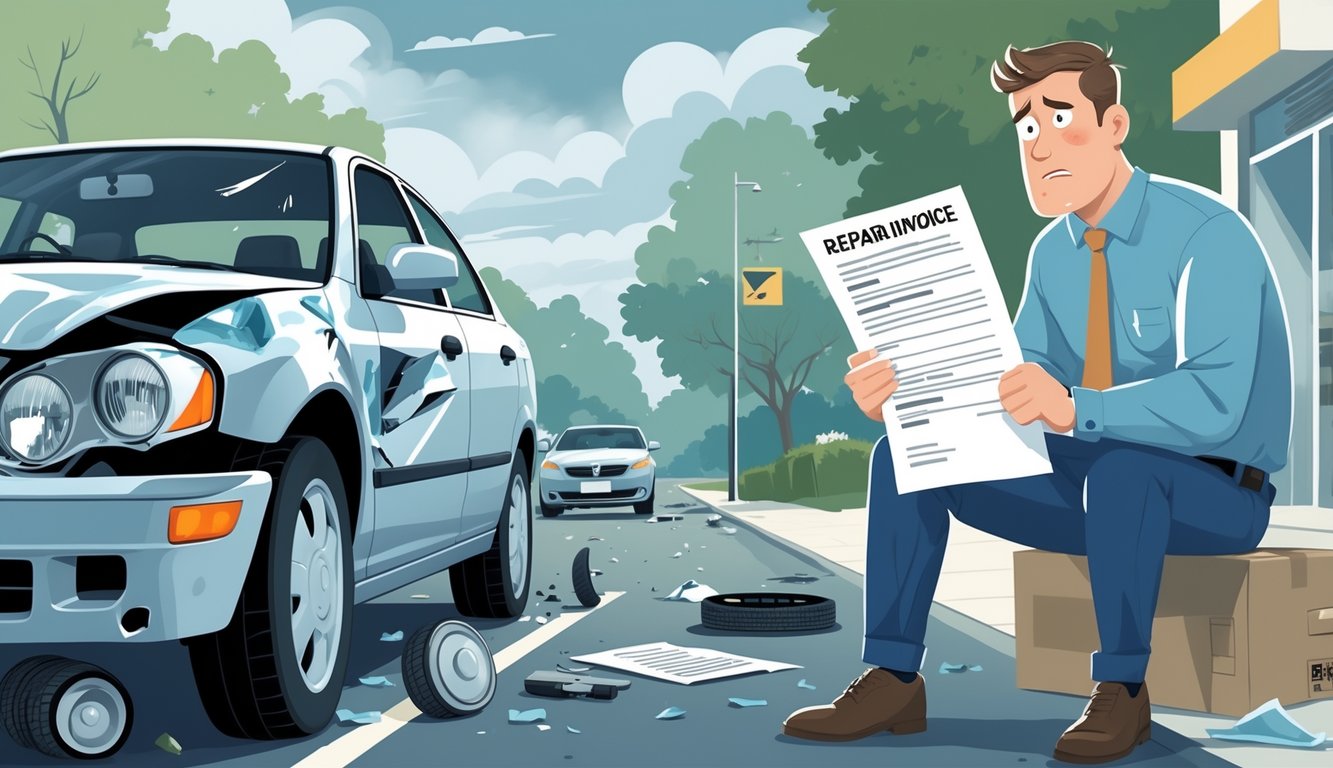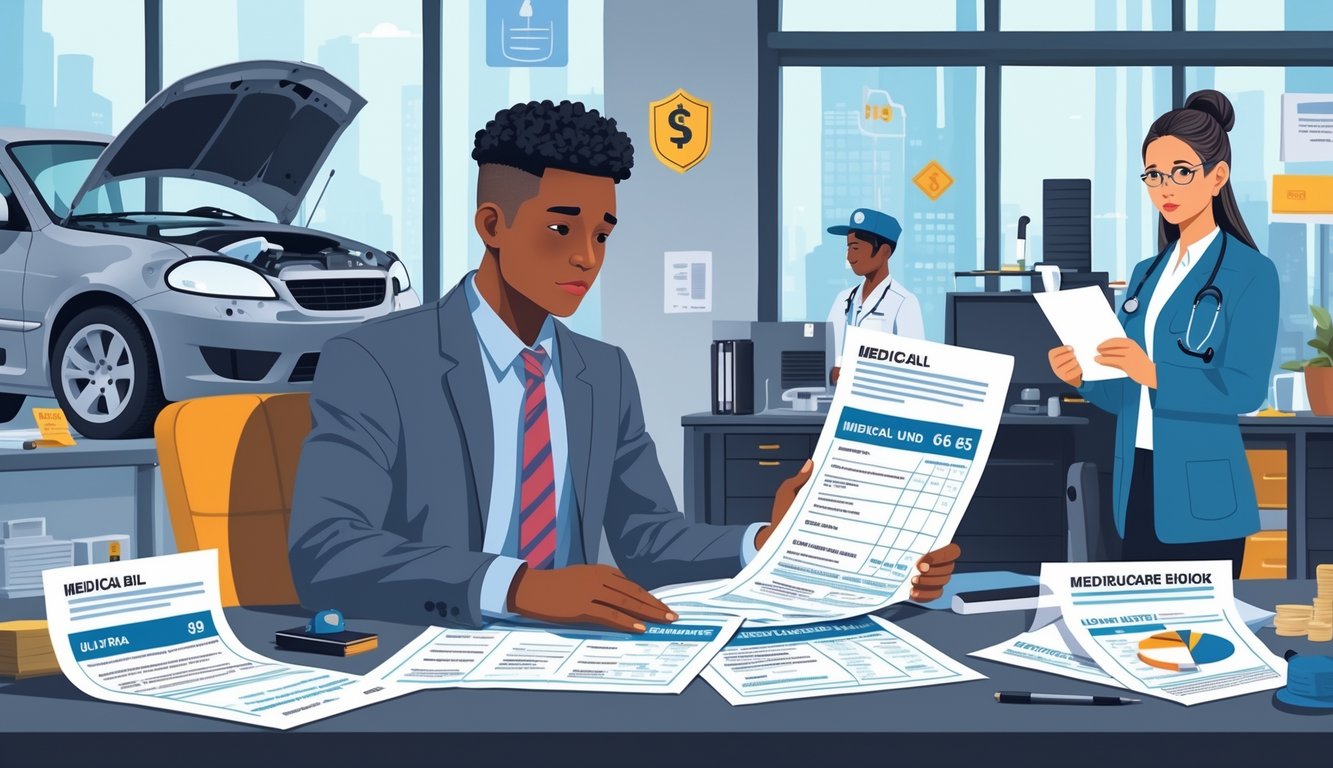
Link Between Clauses and Financial Hardship
What’s honestly infuriating is how every weird phrase hidden in your policy just quietly shifts the risk onto you. Suddenly, “conditional coverage” means what you thought you bought isn’t what you get. Consumer Reports found over 30% of people paid extra because their insurer “reinterpreted” the deal mid-claim. Adjusters have told me my $500 deductible didn’t matter—some “alternative parts” clause (page eight, who reads that far?).
I got stuck with $1,300 in medical bills after my insurer called my procedure “experimental,” even though my doctor swore it was standard. Stress, cash flow issues, late payments jacking up interest—this stuff snowballs. Sometimes your credit tanks, or you skip meds just to pay for a tow. “Full coverage” never mentioned that.
Comparing Estimated vs. Actual Expenses
Every time I thought I had a handle on costs, the bills ran circles around the estimates. Adjuster said $2,300 total (so precise it’s suspicious), but my receipts pushed it past $4,100. Medical bills? Don’t even get me started. Lease agreements, sensor recalibrations, app fees—none of it felt “optional.”
I tried to track it all for taxes, which turned into a joke:
| Expense Type | Insurer Estimate | Actual Cost | Difference |
|---|---|---|---|
| Repairs | $1,500 | $2,350 | $850 |
| Medical | $400 | $1,200 | $800 |
| Rental Car | $180 | $645 | $465 |
Saw a claims analyst on Reddit say most people underreport their costs by 40%. I can’t even get my pharmacy to print receipts that fit in a folder. Now, whenever I hear “estimate,” I just get a headache.
Examining Medical Expenses Linked to Insurance Clauses

Here’s what really messes with me: those “full coverage” pamphlets look harmless, but then—bam—$2,200 bill for an “out-of-network trauma specialist” you never even talked to. My brother-in-law thought he was good after a $150 ER copay. Nope. A week later, surprise bill. Nobody warns you, just a fat envelope in the mail. Kaiser Family Foundation (2024) says nearly 1 in 5 insured patients still get hit with unexpected medical bills after ER trips. That’s… not comforting.
Medical Claims Impacted by Hidden Terms
You’d think emergency care is straightforward—ambulance, doctor, patch you up, done. Insurance companies? They love tossing in “except as otherwise noted.” I’ve seen policies deny major repair costs because the MRI tech was “out-of-network secondary support.” What does that even mean? Nobody explains it while you’re strapped to a stretcher.
Suddenly, your $200 copay turns into three separate bills: one for the facility, one for the doctor, one for some “provider processing.” The legalese never actually says what’s not covered. American Hospital Association says even insured folks are running into these “exceptions” more than ever, especially for stuff like imaging or specialty repairs. My cousin? $14,800 out-of-pocket for a knee surgery because the surgeon wasn’t “in-network” on her app, even though the hospital was. Make it make sense.
Coverage Gaps for Injury Treatments
This “usual, customary, and reasonable” charge thing? It’s a black box. Who decides what’s reasonable? Not me. Your plan says it covers 80%, but then you need follow-up and suddenly there’s a “facility assessment adjustment” that isn’t reimbursed. I thought rehab after my accident would be a given—nope, my health insurance called it “elective outpatient therapy.”
You start with an injury, end up with a spreadsheet, and still don’t know if your doctor’s visit is covered. A billing guy at Johns Hopkins told me even he checks his own family’s policy every time. Is it mental health? Physical therapy? Medical equipment? Policies sneak in “annual maximums” or “aggregate caps”—translation: “We’ll pay for crutches, unless you’ve already broken something this year.” Even lawyers say don’t count on the same thing being covered twice. Policies change mid-year just to tighten the screws.
Indemnity and Its Role in Repairs
Insurance fine print? It’ll turn a simple repair into a multi-week headache. Indemnity’s supposed to put you “back where you started”—but the actual details, like repair clauses, cash value caps, and exclusions, decide what that means after you get rear-ended.
What Is Indemnity in Insurance?
Every policy claims it’ll “make you whole.” Indemnity sounds great until you try to use it. I’ve seen people file claims thinking, “Sweet, someone else pays,” and then the adjuster shows up with a “depreciated cash value” quote from some spreadsheet. National Association of Insurance Commissioners says payouts for older cars can be 30% less. Ouch.
Policies let insurers pick between fixing, replacing, or just cutting you a check. Replacement parts? Could be aftermarket, could be whatever’s cheapest. Sometimes the “preferred vendor” shows up with a part you’d never choose. Nobody tells you indemnity skips “betterment”—so no upgrades, even if that’s all that’s available. It’s all just shifting targets.
Limitations of Indemnity Clauses
Here’s the kicker: exclusions, co-insurance, thresholds, special limits—they’re everywhere, even in “all risk” plans. Neighbor replaced a windshield, but his claim got denied because “road debris” wasn’t a “covered event.” You’d think repairs mean everything, but “acts of God,” old damage, or “intentional loss” are all loopholes.
Co-insurance means you’re on the hook for 10–30% of repairs, plus your deductible. Indemnity won’t cover “wear and tear.” Try convincing a claims adjuster that rust isn’t your fault. Good luck. Underwriters cap payouts at “actual cash value,” so you might only get enough for a half-done fix. Miss the deadline to report? They’ll dock your payout. People don’t believe it until they lose out. Fine print always wins.
